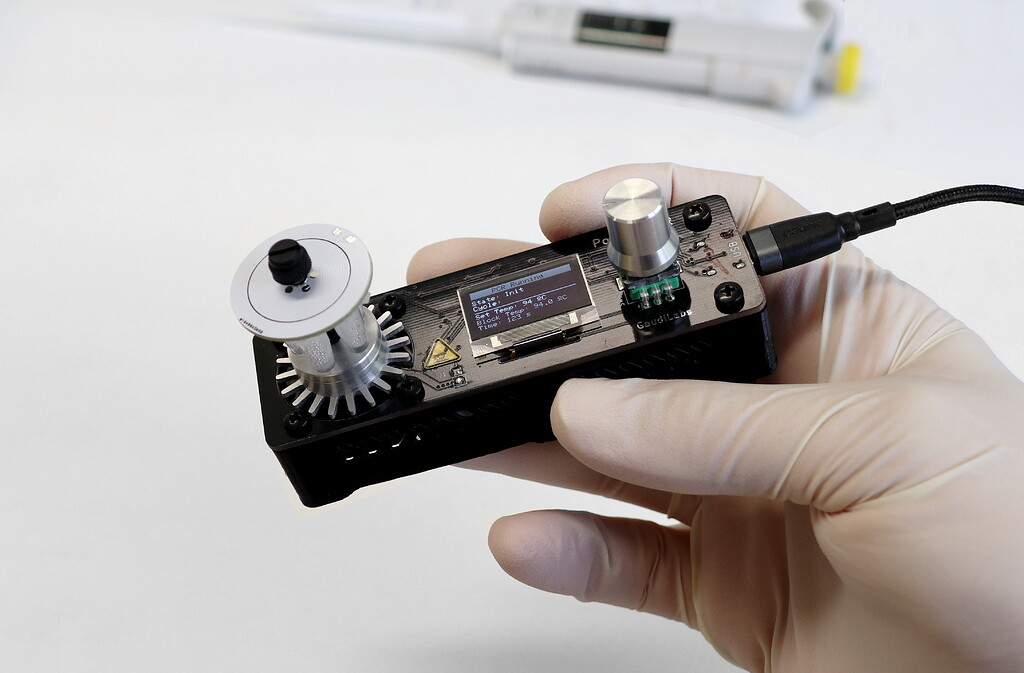Hi GOSH
With all the experience from openPCR, gaudiPCR, PicoPCR, miniPCR I spent the last 6 months developing the PocketPCR, a simpler, smaller and more affordable thermocycler ( PocketPCR – The thermocycler for the rest of us ) . The whole design is optimized for low cost and desk top mass production. It runs from a regular USB port, power adapter or battery pack. I produced a small batch of kits that I sell at 99 euro on GaudiShop (PocketPCR Kit – GaudiShop) - free shipping worldwide. And of course it is open source science hardware, all files available on GitHub ( GitHub - GaudiLabs/PocketPCR: Pocket size USB powered PCR Thermo Cycler ).
After the launch I was overwhelmed with the positive adoption by the community (134 likes, 45 comments and 61 shares on facebook). And I am now in talks with Alessandro Yaw Crimi about bringing 1000 PocketPCR to Ghana, with Yanwu Guo about bringing it to schools in China and with Josiah Zayner about offering the PocketPCR through The ODIN.
Let me know what you think and how to develop the project further.
Best,
Urs

 .
.



 ) here on DocuBricks with instructions how to modify the design:
) here on DocuBricks with instructions how to modify the design: 





 ; just low-to-mid cost).
; just low-to-mid cost).
